by Matt Corrion
After getting great feedback on my 20 Best Xeriscape Plants for Colorado post, which included a few follow-up requests, I have decided to publish a list of the best high altitude plants for landscaping.
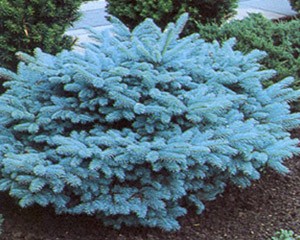 The Challenges of High Elevations
The Challenges of High Elevations
When landscaping at higher elevations, there are many challenges to consider. The plants themselves are often limited in how cold of winter temperature they can withstand. And there are also the challenging microclimates, wind, and levels of moisture that can occur at high altitudes.
Grazing deer and elk are also a common problem at higher elevations. All of these factors should be carefully considered in the design of the landscape. Consult the USDA Plant Hardiness zones for your local area, and consider working with an experienced landscape architect or garden designer.
It would be a great idea to do some nature walks in your local area to observe the native plants that are thriving naturally, and are well adapted to the various microclimates that can be found in your area.
I have decided to limit the list to plants that I feel will do well above 8,000 ft. There are several plants that are advertised to do well above 7,500 ft, but I am not comfortable recommending all of them, so lets go with 8,000.
Deciduous Trees
- Quaking Aspen Populus tremuloides
- Canada Red Cherry Prunus virginiana ‘Canada Red’
- Russian Hawthorne Crataegus ambigua
- Ginnala Maple Acer ginnala
- Apple and Crabbaple Malus (several types)
- Alder Alnus tenuifolia
- Tartarian Maple Acer tartaricum
- Birch Betula (several types)
- Mountain Ash Sorbus aucuparia
- English Oak Quercus robur
(more…)
Related Posts:
by Matt Corrion
Juniper bushes are the most despised landscaping plant in existence. I know this to be true, because 75% of the time that I talk with a homeowner or property owner about renovating their landscape, they say something like “those Junipers have GOT to go!”.
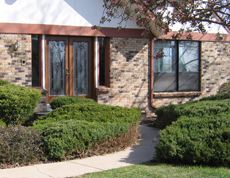
Juniper bushes are common in older landscapes. Here they were not given adequate room, so they have been sheared off along the walkway.
Why is this? I think there are a few main reasons, aside from the fact that they are prickly beasts that we have all tangled with a one point (either landing in one while playing as a kid, or getting that annoying rash on your arm while trimming them) :
1) They were simply overused in the past. People are just tired of them and want something unique and new. And since they live for ages and rarely die, they are often the only living survivors guarding the front doors of homes in any older neighborhood.
2) They were not planted with enough room to grow. Many of the varieties get quite large after say, 20 years, and quickly outgrow the planting bed. Because they grow too large for their setting they require excessive pruning to keep them at a manageable size. This pruning then exposes all of the dead old growth inside the base of the plant- ugly!
3) The aforementioned prickliness. And good luck getting the baseball you were tossing around out of the center of that green monster.
Given these negatives, why then should you consider using Juniper plants in your landscape?
(more…)
Related Posts:
by Matt Corrion
Here a few images I snapped from my “dry Xeriscape” garden at my home in Arvada, Colorado. This garden faces southwest, and receives little to no supplemental watering. The area was previous an irrigated lawn before I converted it to this Xeriscape.
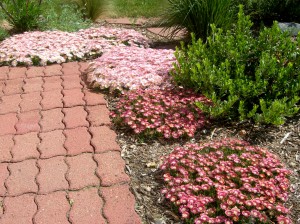
Delosperma (Red Mountain and Mesa Verde Iceplant) and Actostaphylos x coloradoensis (Panchito Manzanita)
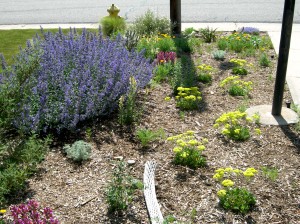
Dry Xeriscape Garden
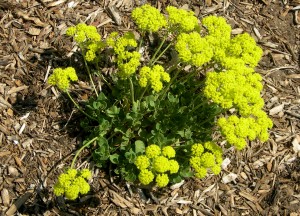
Erigonum umbellatum (Kannah Creek Buckwheat)
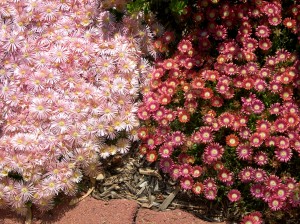
Delosperma (Red Mountain and Mesa Verde Iceplant)
This is the official blog of Outdoor Design Group, Colorado Landscape Architects. For more information about our business and our services, click here.
Related Posts:
by Matt Corrion
I often get asked to recommend Xeriscape plants for Colorado landscapes. This is a difficult task because there are so many to chose from, and I would hate to limit anyone’s pallette to a limited number. After all, it is the variety in color, textures, and form that makes Xeriscaping so attractive.
That being said, I do think a small list can be helpful to people who are new to the area, or are not familiar with the available plant choices and may be overwhelmed by a catalog of thousands of plants. Although this is a Colorado list, most of these plants can be used in many places throughout the world depending on the local climate.
- Fernbush – Chamaebatiaria millefolium Fernbush is a medium sized shrub with interesting fern-like leaves that persist throughout the winter. This shrub requires little water or maintenance, and produces clusters of small white flowers in the late spring through early summer.
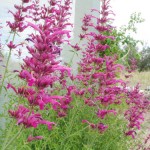
- Agastache – Agastache ssp. Agastache, or hummingbird mint, is a fragrant group of colorful perennial herbs that is available in many colors mostly ranging from orange to pink. The plants are covered with beautiful tubular flowers from mid-summer to fall. Hummingbirds absolutely love these plants. (more…)
Related Posts:
by Matt Corrion
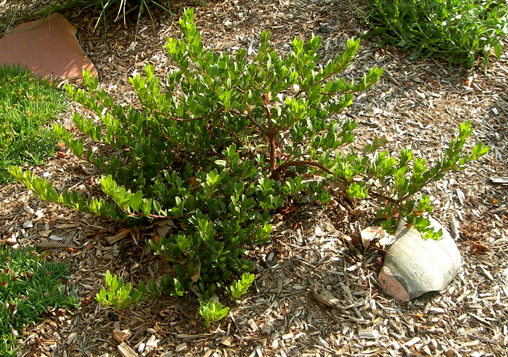
Panchito Manzanita is one of my favorite plants- and not just because the name is so fun to say. What sets this plant apart is that it’s: 1) low-growing, 2) evergreen , and 3) it can handle full sun and minimal watering. That combination can be difficult to find outside of the standard limited options like the low-growing junipers.
As we convert more lawn areas into Xeriscape to save water, I think the use of evergreen plants is a vital design element to help replace some of the green color of the replaced lawn that is lost. Panchito Manzanita is an excellent choice because it looks great year-round, stays fairly compact, and requires little maintenance.
PLANT STATS
Scientific Name: Arctostaphylos x coloradoensis
Plant Type: Evergreen Shrub
Mature Height: 12-24″
Mature Spread: 18″-48″ (quite variable, depending on conditions)
Water Requirement: Low- may need more water the first growing season, but requires little water once established.
Exposure: Full Sun to very light shade
Best Features: Unique evergreen foliage consisting of leathery 1″ long leaves. This plant really looks great year-round.
Flowers: Small urn-shaped pink to white flowers from February to April
Winter Interest: Very attractive evergreen foliage, reddish colored stems and bark
Disadvantages: Slow grower the first season or two
Availability and Sizes: I have been told that this plant is quite difficult to propagate- therefor It can be a little hard to find. As it gains more popularity and demand for it goes up, it should be available in larger quantities. Usually it is sold in 1 gallon size containers. Since it is slow-growing, a 5 gallon size shrub would be even better.
Maintenance Tip: A low maintenance plant. You may want to prune a branch or two here or there.
Other: Named to Plant Select in 2006. Do not confuse with Arctostaphylos uva-ursi, which prefers much more moisture and shade.
This is the official blog of Outdoor Design Group, Colorado Landscape Architects. For more information about our business and our services, click here.
Related Posts:
 The Challenges of High Elevations
The Challenges of High Elevations





